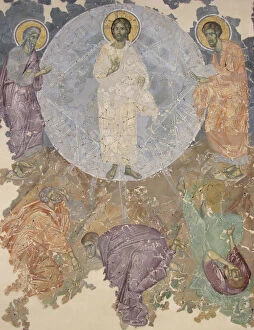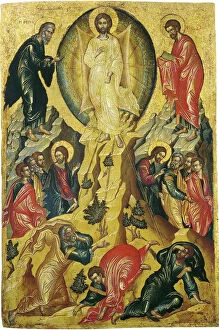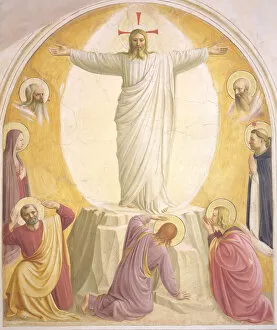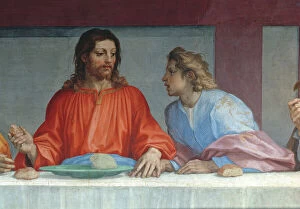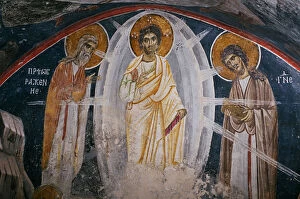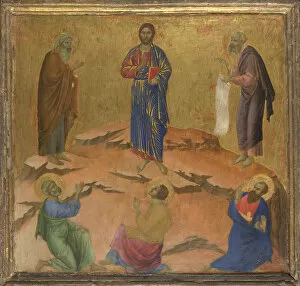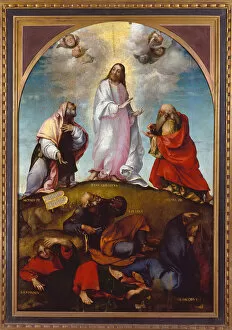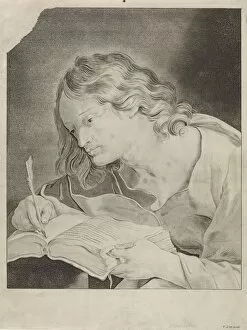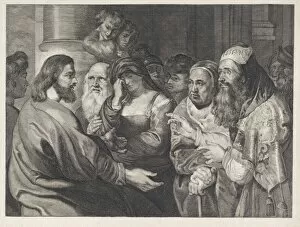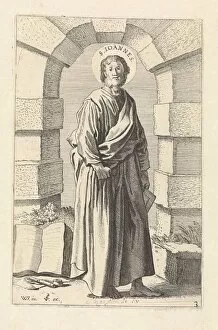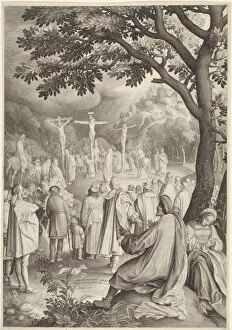Apostle John Collection
"The Apostle John: Witness to the Transfiguration of Jesus through Centuries of Art" Throughout history
For sale as Licensed Images
Choose your image, Select your licence and Download the media
"The Apostle John: Witness to the Transfiguration of Jesus through Centuries of Art" Throughout history, the Transfiguration of Jesus has captivated artists and viewers alike. From anonymous painters in the 13th century to renowned masters like Raphael, this biblical event has been depicted with awe-inspiring beauty. In a mid-16th-century artwork by an unknown artist, we see The Transfiguration of Jesus come alive. The scene is filled with radiant light as Christ stands gloriously transformed before his disciples Peter, James, and John. Their expressions reveal their astonishment at this divine revelation. Fra Giovanni Angelico's rendition from the early 15th century captures a similar sense of wonderment. His delicate brushstrokes bring out the ethereal quality of Christ's transfigured form while conveying a profound spiritual experience for those present. Duccio di Buoninsegna takes us back even further with his work from around 1308-1311. Here, he portrays the momentous occasion on a smaller scale but still manages to convey its significance through intricate details and vibrant colors. Moving away from paintings, an engraving depicts The Apostle John himself. This representation offers insight into how people imagined one of Jesus' closest disciples during that time period. Apt's epitaph honoring Johannes Gockerlein in ca 1515 features another depiction of The Transfiguration. It showcases Apt's skillful craftsmanship and attention to detail as he brings forth both heavenly radiance and human emotion in equal measure. Raphael's version from 1510-1512 demonstrates his mastery over composition and perspective. He presents multiple scenes within one painting - below lies chaos as possessed boy writhes while above sits serenity as Christ hovers amidst clouds alongside Moses and Elijah. Ancient Russian frescos also bear witness to this transformative event across different centuries - from ca 1380 to the twelfth century onwards - showcasing the enduring impact of this biblical account on Eastern Orthodox art.

